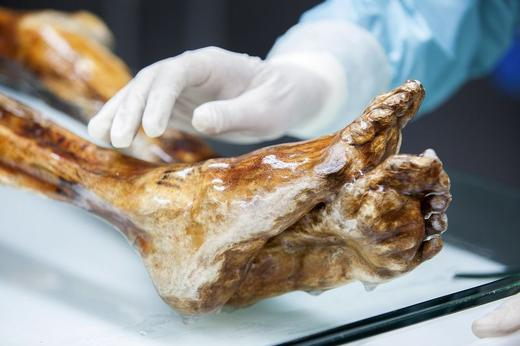Atherosclerosis is a disease which plaque builds up inside the arteries and the leading cause of death in today's wealthier countries. But if you think that this is a modern disease then it needs to be mentioned that scientists have found the evidence of a similar issue in mummies from the 16th century.
The scan report of the 16th-century Greenland mummies, who used to follow a diet rich in omega-3 fatty acids, has revealed that the ancient hunters suffered from clogged-up arteries. Even though it is believed that atherosclerosis is a modern disease caused by the daily lifestyle, the recent findings opened eyes after it clarified that ancient human remains also indicated towards the same disease.
Early evidence of atherosclerosis

A team of scientists from Boston found evidence of this disease in and on the artery walls of well-preserved human remains of 16th-century Inuit people. The scan revealed that these ancient humans from Greenland ate "fish, birds, marine mammals and caribou" but the researchers mentioned that they are unclear about the factors which caused atherosclerosis in ancient humans.
After the researchers at HORUS Study Group studied the well –preserved mummies of four Inuit adults and one infant who lived in Greenland around 500 years ago, the team found signs of plaque buildup in the arteries of three of the individuals.
The researchers mentioned in the American Medical Association's JAMA Network Open digital platform about their finding and stated that "Although commonly assumed to be a modern disease, the presence of atherosclerosis in premodern human beings raises the possibility of a more basic predisposition to the disease."
Mummies from Greenland
Cardiologist L Samuel Wann of Ascension Healthcare in Milwaukee and his colleagues studied the mummied. The skeletal and dental analysis of the mummies showed that two of them were men and two were women, aged between 18 and 30.
After conducting CT scans, three mummies were found to have 'calcified atheroma,' which is an accumulation of plaques of fatty material in the arteries that appeared as high-density regions in the scans. But scientists are not clear whether this disease caused these Inuit adults to demise.
Atherosclerosis overview
It occurs when the blood vessels that carry oxygen and nutrients from the heart to the rest of the body (arteries) become thick and stiff. As per the experts, atherosclerosis develops gradually.









